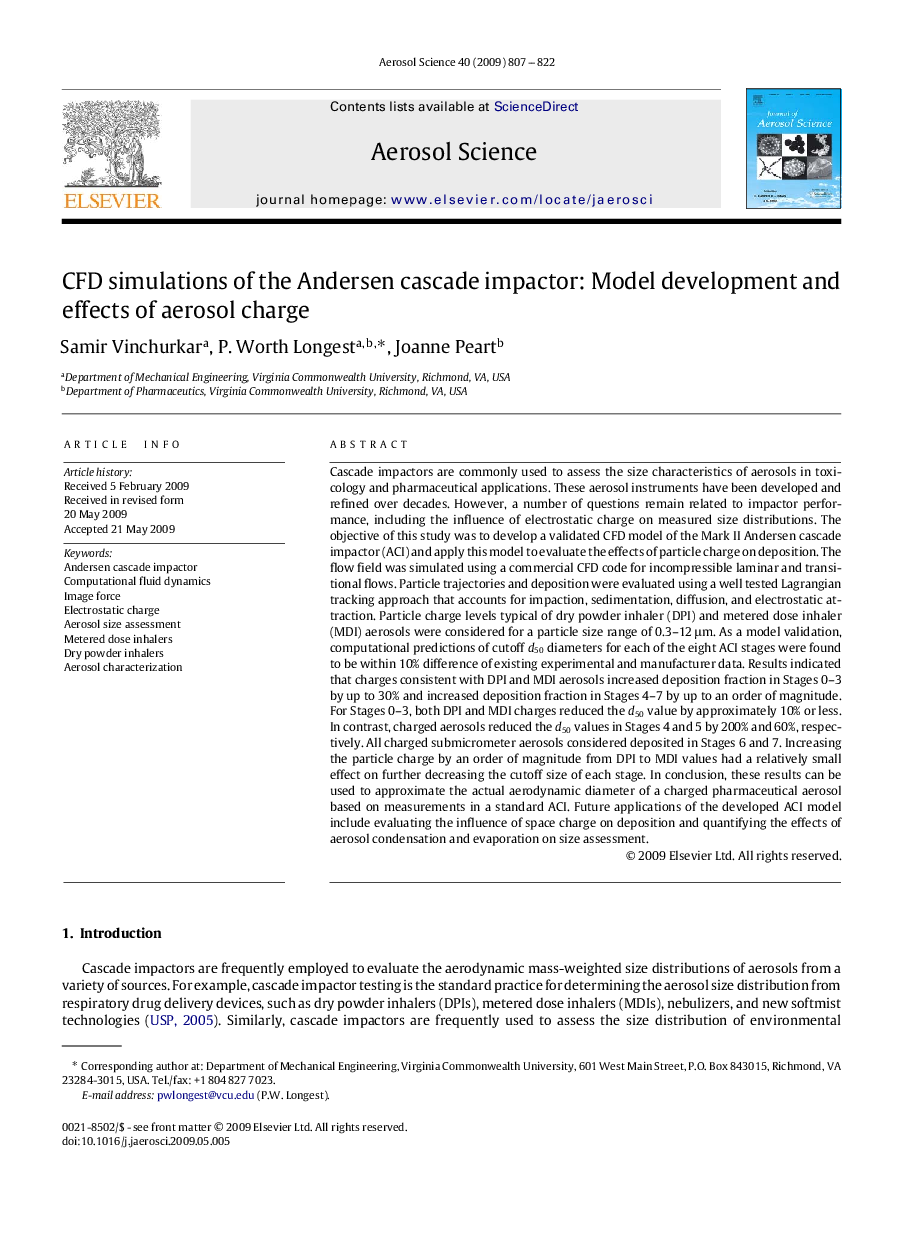| کد مقاله | کد نشریه | سال انتشار | مقاله انگلیسی | نسخه تمام متن |
|---|---|---|---|---|
| 4452960 | 1312119 | 2009 | 16 صفحه PDF | دانلود رایگان |

Cascade impactors are commonly used to assess the size characteristics of aerosols in toxicology and pharmaceutical applications. These aerosol instruments have been developed and refined over decades. However, a number of questions remain related to impactor performance, including the influence of electrostatic charge on measured size distributions. The objective of this study was to develop a validated CFD model of the Mark II Andersen cascade impactor (ACI) and apply this model to evaluate the effects of particle charge on deposition. The flow field was simulated using a commercial CFD code for incompressible laminar and transitional flows. Particle trajectories and deposition were evaluated using a well tested Lagrangian tracking approach that accounts for impaction, sedimentation, diffusion, and electrostatic attraction. Particle charge levels typical of dry powder inhaler (DPI) and metered dose inhaler (MDI) aerosols were considered for a particle size range of 0.3–12 μm. As a model validation, computational predictions of cutoff d50 diameters for each of the eight ACI stages were found to be within 10% difference of existing experimental and manufacturer data. Results indicated that charges consistent with DPI and MDI aerosols increased deposition fraction in Stages 0–3 by up to 30% and increased deposition fraction in Stages 4–7 by up to an order of magnitude. For Stages 0–3, both DPI and MDI charges reduced the d50 value by approximately 10% or less. In contrast, charged aerosols reduced the d50 values in Stages 4 and 5 by 200% and 60%, respectively. All charged submicrometer aerosols considered deposited in Stages 6 and 7. Increasing the particle charge by an order of magnitude from DPI to MDI values had a relatively small effect on further decreasing the cutoff size of each stage. In conclusion, these results can be used to approximate the actual aerodynamic diameter of a charged pharmaceutical aerosol based on measurements in a standard ACI. Future applications of the developed ACI model include evaluating the influence of space charge on deposition and quantifying the effects of aerosol condensation and evaporation on size assessment.
Journal: Journal of Aerosol Science - Volume 40, Issue 9, September 2009, Pages 807–822